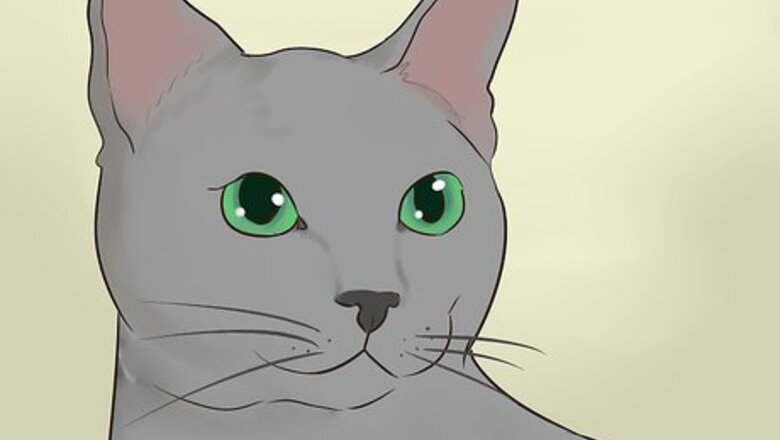
views
Looking at Physical Characteristics
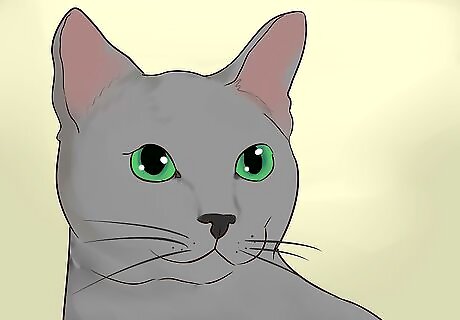
Look for emerald-green eyes. Korat cats are born with blue eyes, but their eyes will turn to amber sometime in the period between their birth and the cat's fourth birthday. Then, sometime between the cat's second and fourth birthdays, its eyes will turn a bright green. If your cat has emerald-green eyes, it could be a Korat.
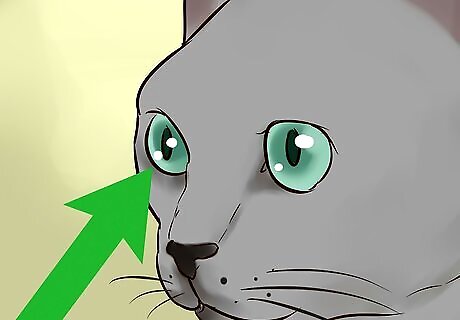
Check for round eyes. Some cats have slanted or angular eyes. Korats's eyes, however, are large, round, alert, and luminous. If this sounds like your cat, you may have a Korat.
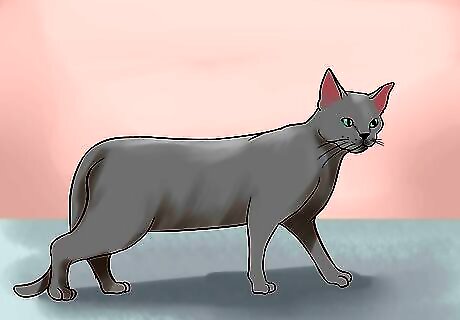
Look for silver-blue fur. Korat cats have what is described as a bluish coat (in fact, it's closer to a brown or gray color). The fur is tipped with silver, giving it a kind of shiny quality, especially where the hair is at its shortest.
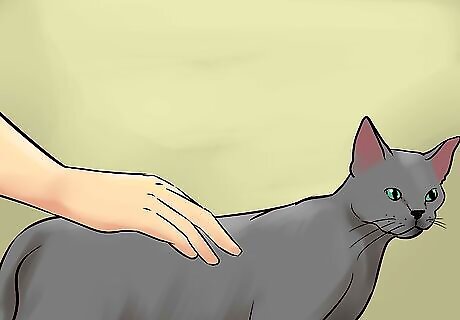
Look for a single medium-length coat. Korat cats only sport a single coat of medium-length fur, with no undercoat. Run your hand over the cat you're trying to identify in order to determine if it has a double coat or a single coat.
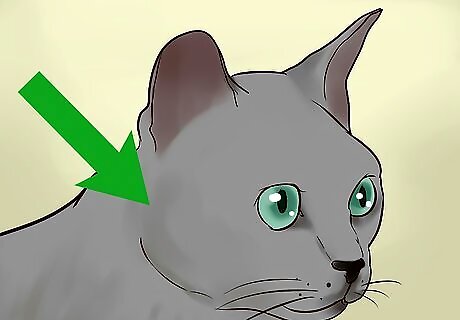
Check for a heart-shaped face. Korats have pointed chins and a brow that slopes toward the center of their foreheads. Combined with their round eyes, you should be able to notice a sort of heart shape to the cat's face. The Korat's face is characterized by smooth, curved lines. The Korat's nose will have a slight downward curve to it. Korats have strong and well-developed jaws.
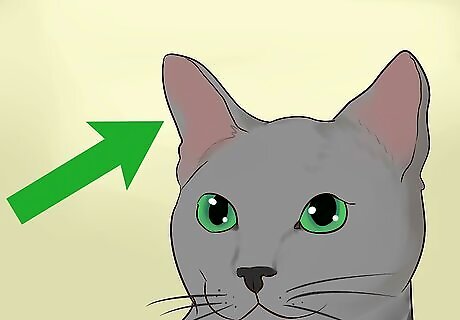
Look for large ears. Korats' ears are wide at the base and flare up into a rounded top. The ears are located relatively high on the head. The outer edge of each ear aligns with the outer edge the cat's head. The ears are relatively hairless inside, and have short, close fur on the outside.
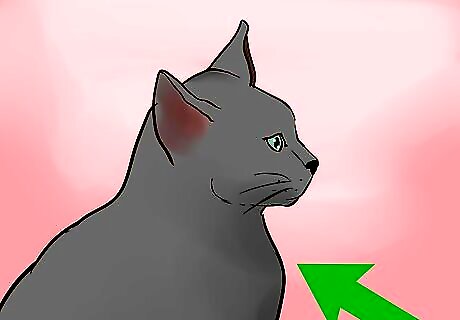
Look for a medium build. Korat cats are medium-sized cats with broad chests. They are rather short and thickset, but their bodies are free of sharp joints or hard lines. The females are generally smaller and might seem almost dainty.
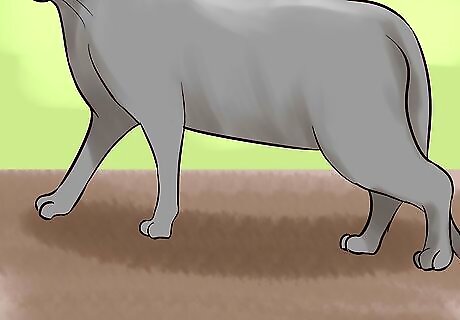
Look for front legs that are slightly shorter than rear legs. Korat cats' legs are proportional to their bodies and end in feet that are oval-shaped. Each front foot has five toes, while each rear foot has four toes. Korat cats' paw pads are covered in dark blue or lavender fur.
Monitoring the Cat's Behavior
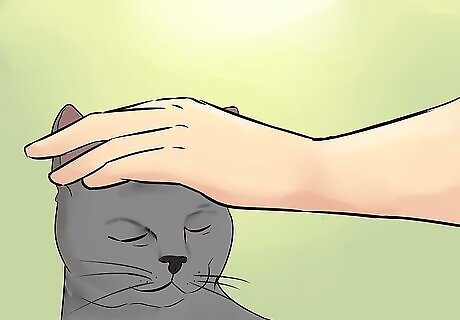
Determine if the cat forms close bonds with a limited number of people. Korat cats tend to form very close bonds with their owners, but do not have much interest in the attention or affections of many other people. If the cat you are attempting to identify follows just one or two people about and has little interest in anyone else, you might have a Korat cat.
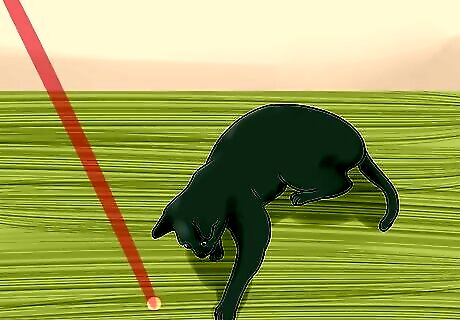
Look for an energetic cat. Korat cats love to play. Wave a string toy or flash a laser pointer around the cat you're trying to identify. If the cat shows great interest and seems to enjoy participating in this playful exercise, you might have a Korat.
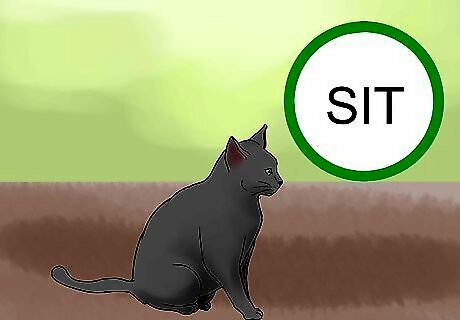
Test the cat's intelligence. Korat cats are very smart. Try teaching your cat tricks like sit, stay, and shake. If your cat easily learns these commands, it might be a Korat. Alternately, you could give the cat puzzle toys – small toys filled with treats that are only dispensed when the cat move the toy in the correct position. Your cat might be a Korat cat if it seems to have no trouble getting the treats out of its puzzle toys.
Identifying the Cat Through Other Means
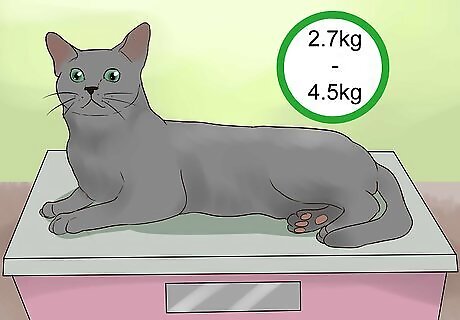
Weigh the cat. Korats tend to weigh six to 10 pounds (2.7 to 4.5 kilograms). To weigh the cat you are trying to identify, place it on a scale, then check the readout.
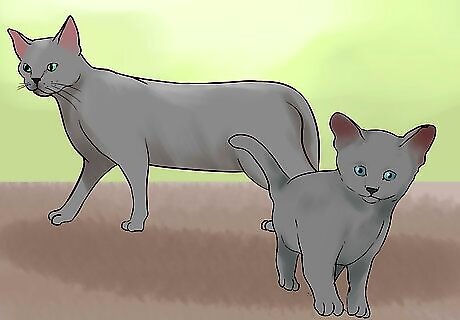
Monitor the cat's growth rate. Korat cats grow slowly. Some don't reach their full size until they are five years old. If the cat you wish to identify is taking a long time to grow, it might be a Korat.
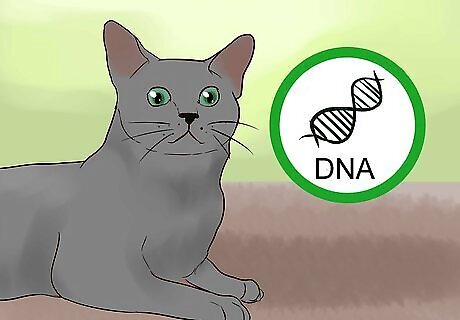
Get a DNA test. Your veterinarian can help you determine whether you've got a Korat by taking a DNA sample. Generally, this is as easy as swabbing the inside of your cat's cheek or, in some cases, drawing its blood. Your vet will inform you of the exact process and any preparations you need to make before bringing your cat for its DNA test.
Ask for pedigree papers. If you purchase your Korat from a breeder, then they should be able to provide you with pedigree papers that detail the lineage of the parent cats, showing that it is a Korat. Before purchasing your new kitten, make sure that these papers are in order.
















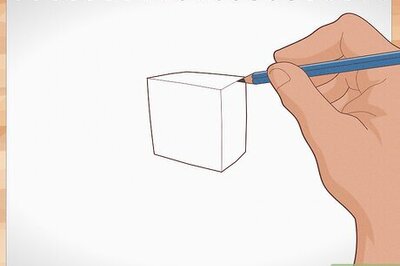
Comments
0 comment